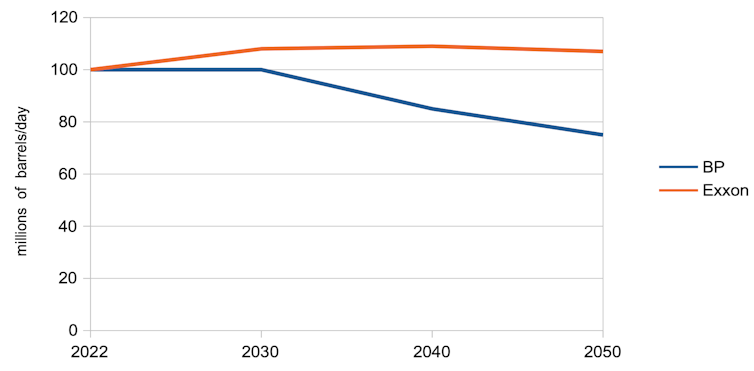Why the US oil majors may end up doing more for the green transition than their (slightly) more progressive European rivals
- Written by Stefan Andreasson, Reader in Comparative Politics, Queen's University Belfast

The energy transition is not on track to mitigate the effects of climate change. Take the case of Shell[1], whose shareholders recently voted to decelerate the UK-based oil giant’s climate targets. Shell had planned to cut its “net carbon intensity” by 20% by 2030 and 45% by 2035, but now seeks a 15%-to-20% reduction by 2030 and no longer has a 2035 target.
Shell CEO Wael Sawan told shareholders this was motivated by “uncertainty around the pace of change in the transition”. BP is also scaling back its climate commitments[2], despite previously being one of the industry’s early movers in setting green priorities.
One important explanation for these shifts is that world demand for fossil fuels keeps rising, reflecting development needs and population growth in the global south and also governments’ failure to keep net-zero targets on track. Oil demand[3] is set to hit nearly 103 million barrels per day in 2024, compared with 100 million in 2019 and 85 million a decade earlier. In 2025, it is expected to cross 104 million barrels.
The US majors – Chevron, ConocoPhillips, ExxonMobil – have done a better job of foreseeing this than their European counterparts, Shell[4]), BP and TotalEnergies. The US majors’ more bullish forecasts have led them to take a different approach to the energy transition, prioritising decarbonising[5] their products[6] rather than diversifying into renewables and associated cleantech, per the Europeans.
Oil demand projections from BP and ExxonMobil







